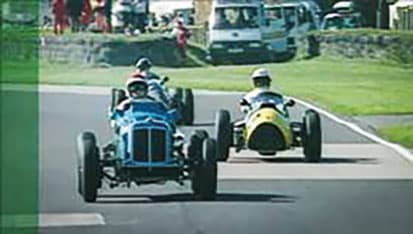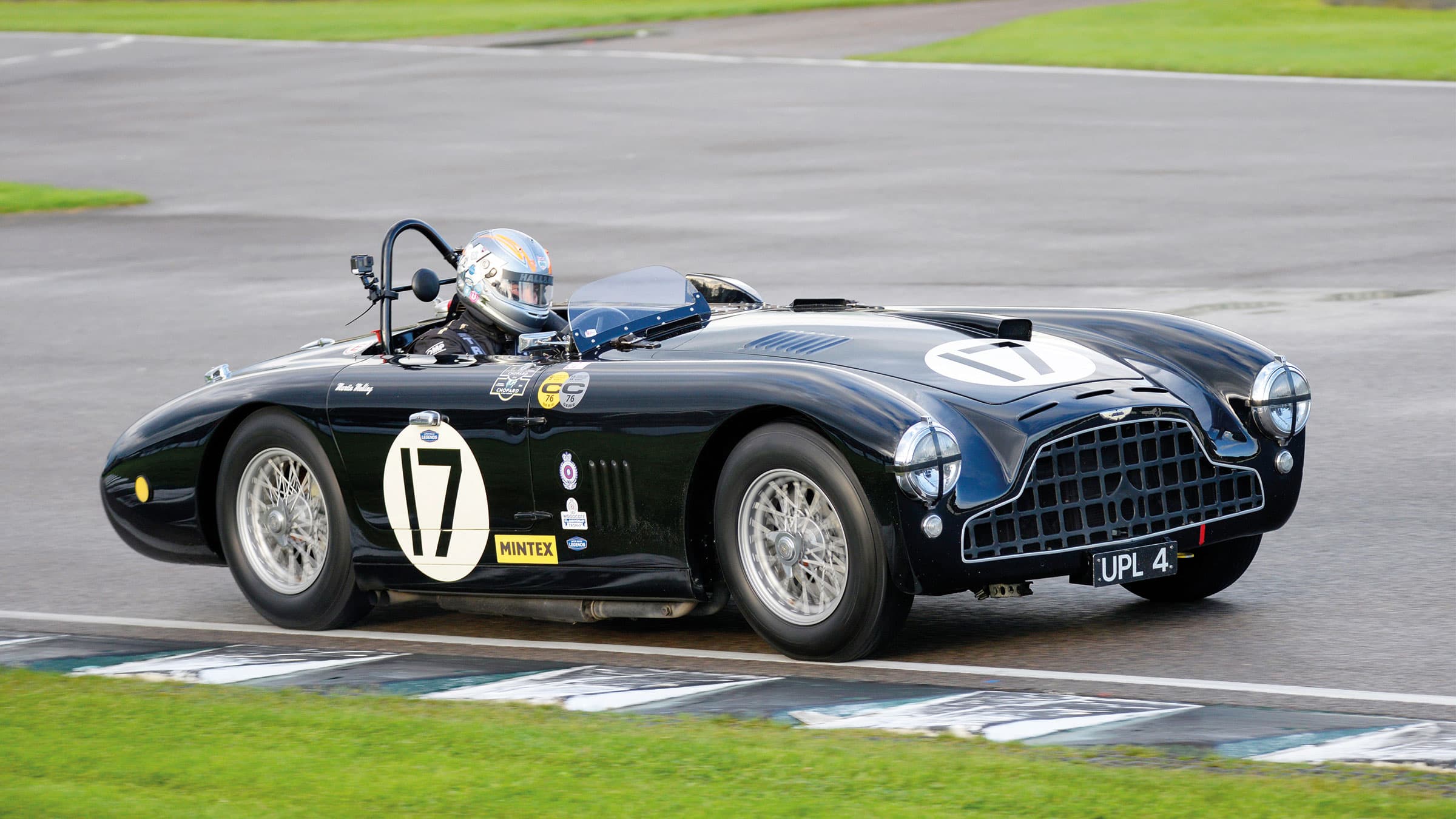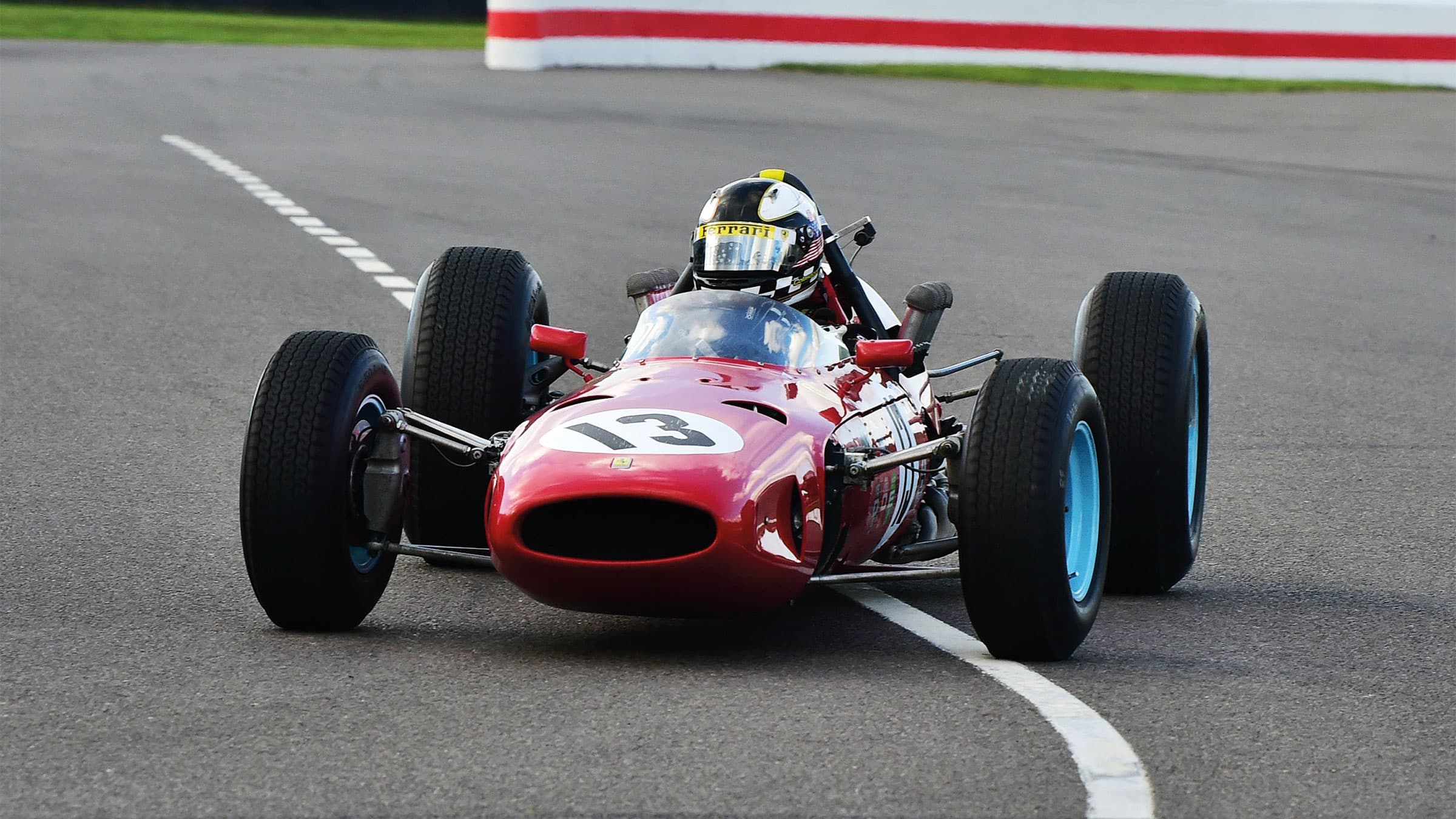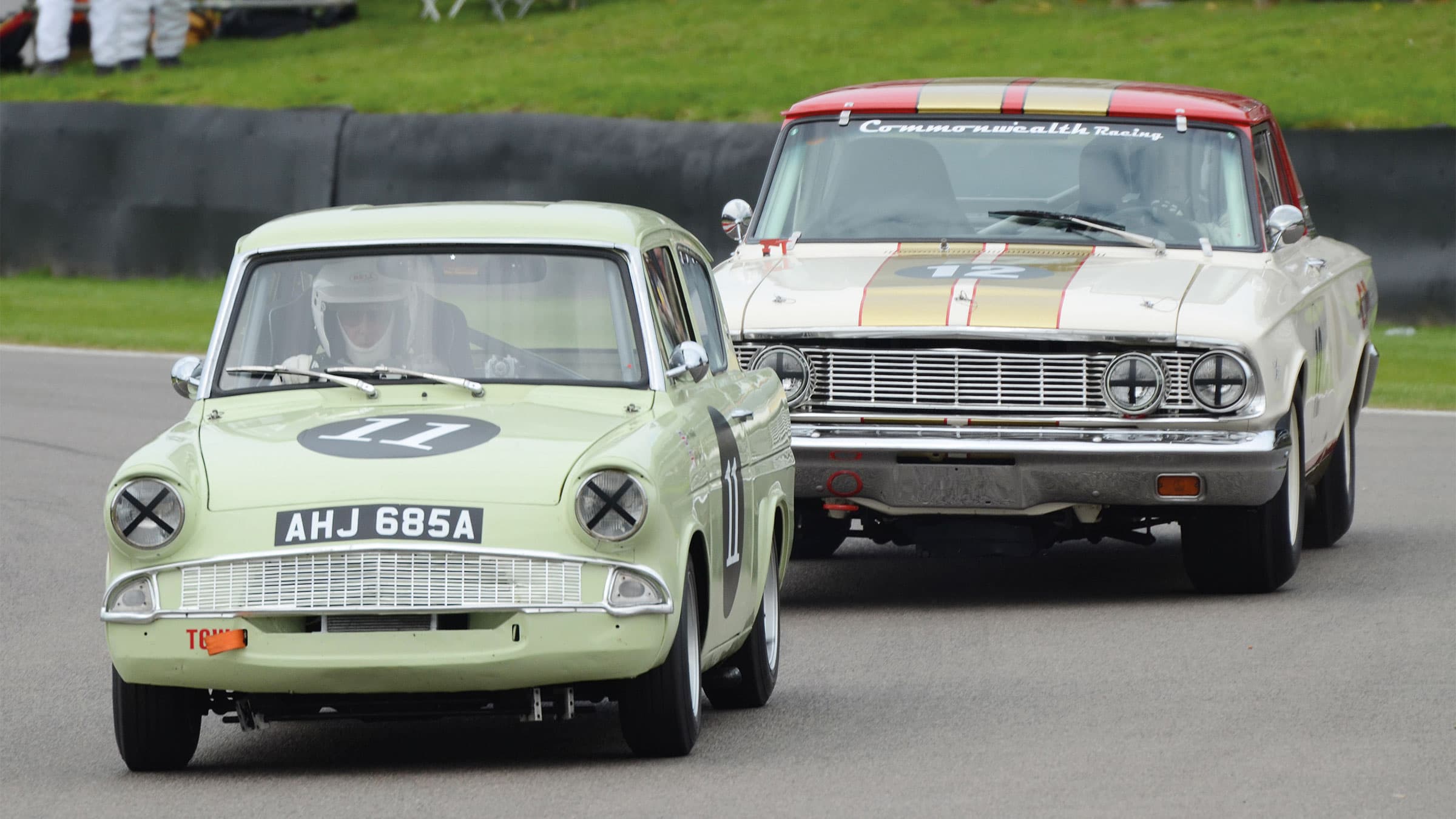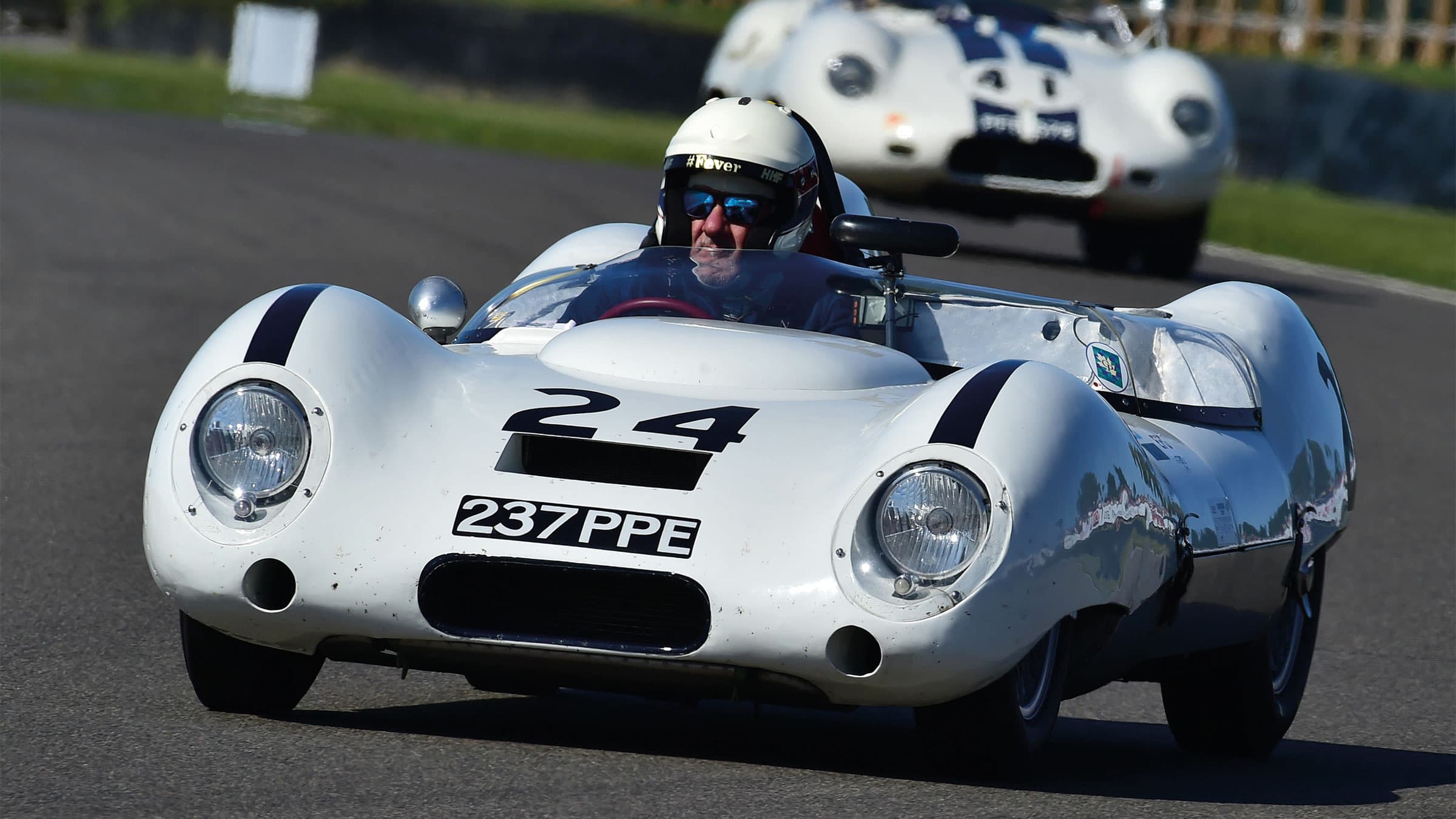Goodwood Revival’s six of the best
In 1998 the first Goodwood Revival took place harking back to the track’s glory years. But, 25 years on and as Marcus Pye explains, the racing was just as incredible
6: Era- R5B Remus wins Woodcote trophy, 1998
The moment the union flag dropped to start the opening race of Goodwood’s modern era was the culmination of a dream for Lord March, 50 years after his grandfather hosted the first event in 1948. Ludovic Lindsay’s Woodcote Trophy victory with an immaculate drive in the ex-Bira ERA R5B, leading – left dormant on opening day when its engine ran a bearing in practice with future Goodwood commentator John Bolster driving – was fitting.
The gallant warhorse returned subsequently in period with Philip Fotheringham-Parker and Duncan Hamilton (1951), Bill Moss (1957-58) and then Ludo’s father The Hon Patrick Lindsay (who won in 1961, then raced 1962-65). After bagging six Revival golds in Lindsay Jr’s deft hands, Remus astonishes still.
5: Nine hours winners 20min repeat in 2017
It’s a fantastic window into the past for spectators when a Goodwood-winning car from its original heyday returns to the Motor Circuit and repeats. Sixty-five years, bar a week, after Peter Collins and Pat Griffith won the first (of three) Nine Hours races, ace preparer/driver Rob Hall fulfilled Aston Martin DB3 owner Martin Melling’s ambition for it to clinch another coveted gold in the Freddie March Memorial race, below left.
David Brown’s black machine covered 283 laps to beat the closer of a pair of Ferrari 225 Ss after the Jaguar C-types had wilted on September 16, 1952. Hall roared over the line chasing leader Chris Ward (Cooper-Jaguar T33) who was nobbled by the regular 5sec penalty for hitting the chicane.
4: Ferrari 1512 pips all-conquering Lotus 25, 2018
When Goodwood closed in July 1966, Jackie Stewart and Jim Clark left the lap record at 1min 20.4sec (105.07mph) in BRM P261 and Lotus-Climax 25 respectively, set on Easter Monday 1965. Clark won that day’s Sunday Mirror Trophy feature. The period Glover Trophy name was reprised for the Revival’s 1500cc F1 showpiece, which Team Lotus 25s have aced nine times. Clark megafan Andy Middlehurst has eight golds on his CV in Australian John Bowers’, thus the joy of Martin Stretton (Lotus-BRM 24) and Joe Colasacco (Ferrari 1512), below left, in beating the combo to second in 2017 and ’18 was palpable. Rain helped Stretton, but Colasacco’s one-length victory was more remarkable in the sonorous 12-cylinder car which Lorenzo Bandini drove to fourth in the 1965 Italian GP.
3: Kristensen unleashes a thunderbolt, 2015
Saloon car racing has brought David & Goliath encounters into focus in many editions of the Revival. Although the rules of engagement have changed somewhat since the event’s first period 1966 cut-off, enabling the most potent tiddlers to run rings round the V8s in the corners – as John Rhodes and others did in period in Mini Cooper Ss – without getting left far behind on the long straights. This characterises the St Mary’s Trophy showcases’s theatre, particularly when the lumbering big bangers, jostling juggernauts which torture their tyres and brakes in response to the impudent whippersnappers.
Goodwood still ultimately favours grunt, but pure class won out in the celebrity leg of the 2015 double-header when Dane Tom Kristensen saddled Henry Mann’s Holman Moody Ford Fairlane Thunderbolt, above. Hobbled by carburettor problems in qualifying, the nine-time Le Mans 24 Hours winner had not completed a flying lap when he started from the back of the grid. Unfazed, he charged from 29th to 12th inside a lap, then coolly hounded down the Lotus Cortinas of BTCC champions Gordon Shedden and Andy Jordan, split by Frank Stippler’s rasping Alfa Romeo GTA, thus rewarding Mann and mechanics for their all-nighter.
2: Wills resists Sussex trophy pressure, 2019
Recalling Goodwood’s totemic Tourist Trophy World Sportscar Championship finales of the late 1950s, the Revival’s Sussex Trophy races embroil the era’s key marques, and more unusual bolides such as Canadian artisan Bill Sadler’s eponymous Chevrolet V8-motivated creations which made transatlantic forays and won the Brighton Speed Trials 30 miles to the east before heading home.
Stirling Moss enhanced his peerless venue and event CVs driving factory Aston Martin DBR1s in 1958-59, beginning four straight TT victories completed with Ferrari 250 GTs.
Many of the shorter-format retrospectives have engendered stunning racing across a spectrum of cars, but 2019’s full-blooded battle raged from flagfall to the chequer. Roger Wills – pedalling the 2-litre Lotus 15, above, which fellow New Zealanders Bruce McLaren and Syd Jensen had raced for Noddy Coombs in the 1958 TT – qualified on pole precisely 61 years later. The following afternoon Wills, twice a Le Mans 24 Hours participant, staved off Sam Hancock’s svelte NART Ferrari 246 S Dino (a Sussex winner thrice running with Tony Dron in 2001-03 and with Bobby Verdon-Roe in 2015) by 0.28sec.
The snarling Lister-Jaguars of Jon Minshaw (2018’s victor in Phil Keen’s hands) and Dutchman David Hart were in the mix throughout. Wills’s success was a triumph for chassis agility over grunt. The last time a Lotus 15 powered by a Climax FPF had prevailed was in 2000 when 1988 IndyCar champion Danny Sullivan earned the coveted cigar.
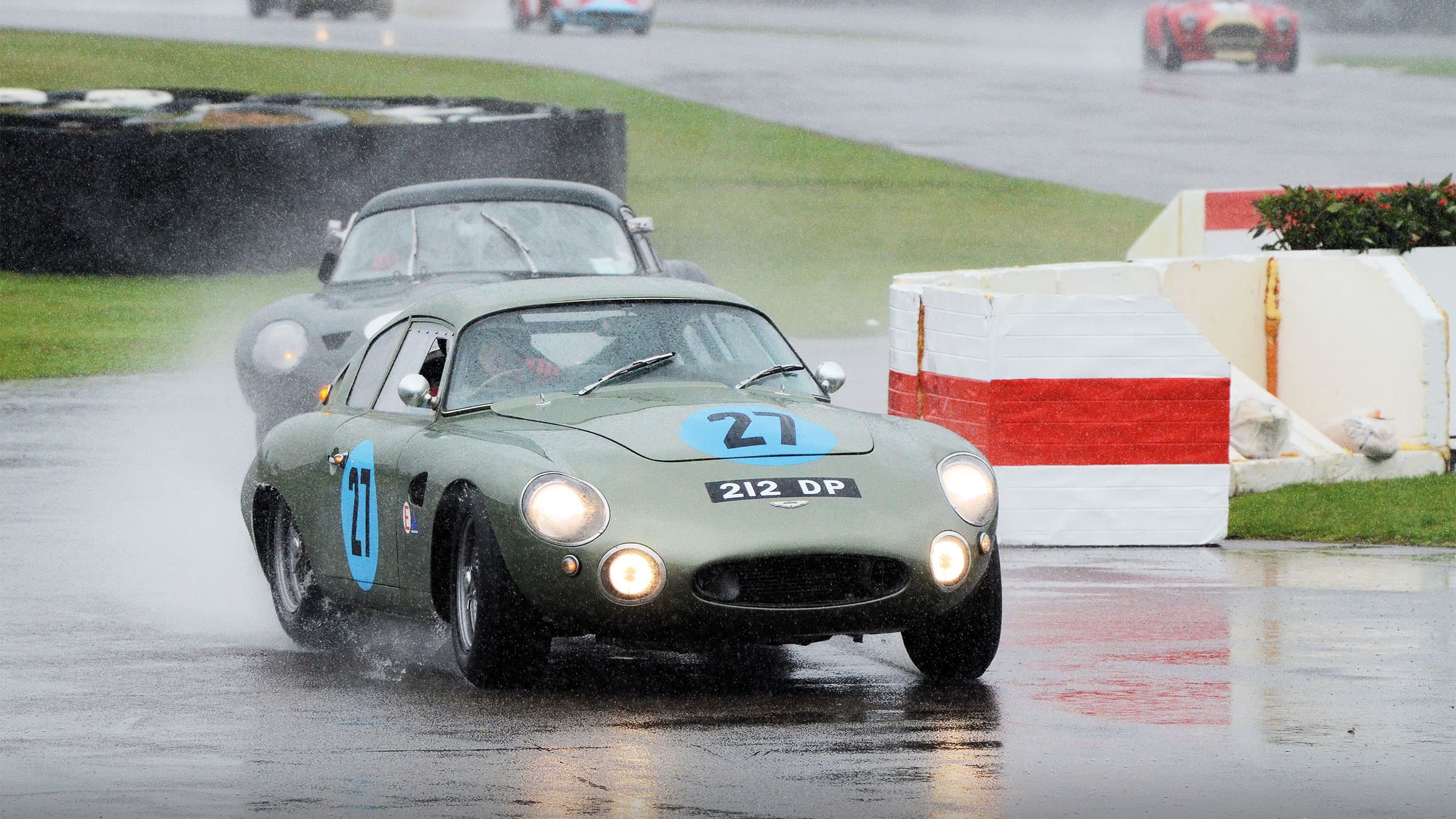
In 2013, Goodwood witnessed a herculean encounter in the rain-sodden TT, with Simon Hadfield winning in the Aston DP212
1: Hadfield walks on water for TT win, 2013
If somebody with vivid imagination had written the script nobody would have believed it. In Aston Martin’s 100th anniversary year a hallowed representative of the marque which won the World Sportscar Championship at Goodwood in 1959 scored its only win in the Revival’s RAC Tourist Trophy Celebration race.
Owned by German Wolfgang Friedrichs, Project 212 was entered for the 1962 Le Mans 24 Hours by David Brown’s factory team, crewed by Graham Hill and Richie Ginther. Hill qualified fourth, and led the first lap, but a fractured oil line ended their race. Outgunned by increasingly exotic company, DP212 was not in the sprint for pole 51 years later. F1 mechanic turned top historic racecar restorer Simon Hadfield was content with eighth, from which Friedrichs (2003 Spa Six Hours winner with Hadfield and David Clark sharing his DP214 replica] would launch a well-proven game plan. Fourteenth after the frenetic first lap, Wolfgang was among the first in when the pit window opened.
Hadfield was into the top 10 within eight laps, making up ground rapidly, when he was astounded to see Tom Kristensen’s Jaguar E-type spinning into Lavant’s gravel bed. Simon almost joined Tom, skating into the greensward, from which he rejoined as the safety car was deployed. Meanwhile, relayed by journalist Chris Harris, mighty in the unique Lister-Jaguar Le Mans Coupé, Anthony Reid led comfortably.
Surely Reid (third at Le Mans in 1990 in a private Porsche 962C with Tiff Needell and David Sears) would make a 20sec advantage stick? Now in a deluge, Hadfield had other ideas. Having halved the deficit in four laps, then again next time round, he no longer gauged the chase from the trackside screens. He could see his prey, or its spray.
The Aston growled under my commentary tower, to a tumultuous cheer from the grandstand. Believing it to be a lap down, Reid said he’d let Hadfield past, then spun at Woodcote trying to match his pace. Ten years on, those present are still talking about it, especially those spectators whose hands Hadfeld shook over the fence having climbed onto the grass bank before the garland ceremony. “I wanted to give something back and thank them for staying,” he said. “The stars aligned today.”
